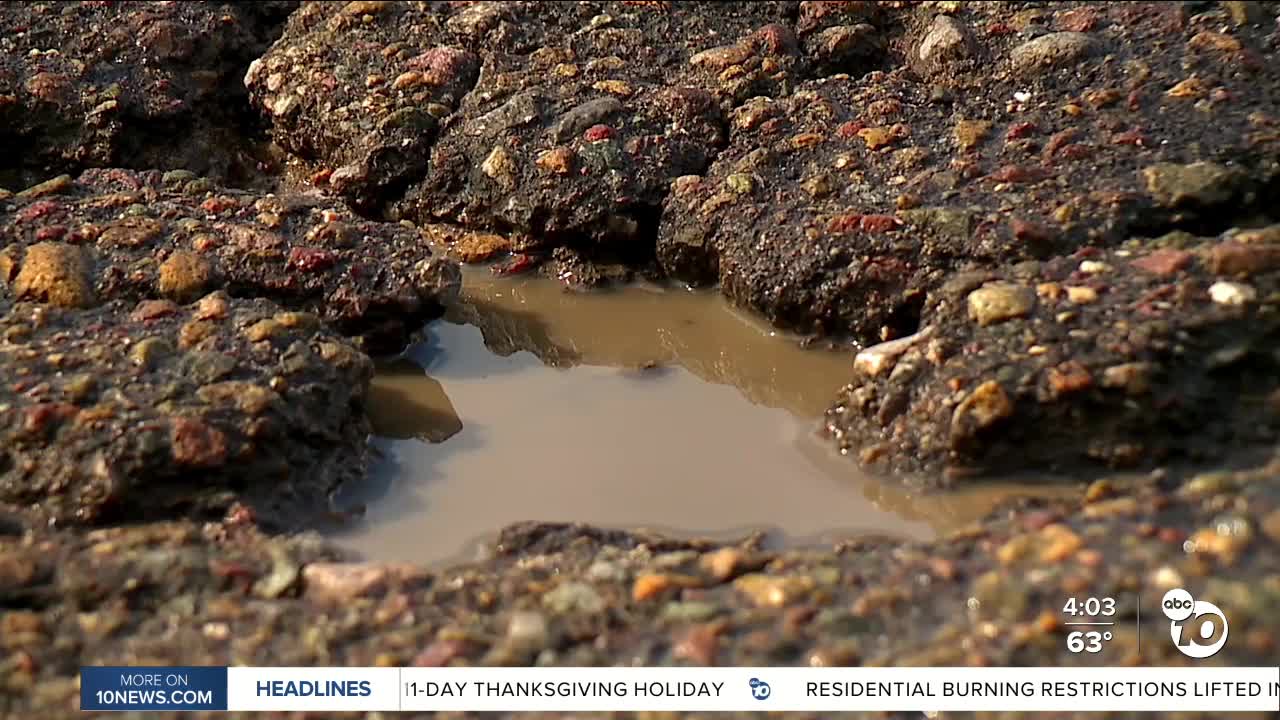SAN DIEGO (KGTV) – Ray Frey’s seen a lot in his decades of experience working on cars.
“God, I’ve seen everything. We've seen people run their cars without oil in their engines, and they blow their engines. I've had one time I had a Toyota truck in here with a bullet slugged through the transmission. I've had cars with the wheels stolen off of them,” Frey of Ray Frey Auto Center said.
“Potholes are just one of them things that just happen nowadays, you know, especially our roads here in San Diego.”
With the recent rain, Frey said those potholes can do some damage to your car if you run over one.
“We have a few front-end parts that actually go bad when you hit a rim or hit a pothole, and we'll usually bend a tie rod end, which is this component here,” Frey said. “A hubcap’s $100 and a tie rod end’s $250 plus an alignment. You know, I’ve seen cars cost thousands of dollars to fix.”
Nowadays, we’re all looking to save a dollar, so we don’t have to spend more money in the future. But Frey says there’s not much you can do proactively to make sure you don't prevent future damage to your car in case you hit a pothole.
“The problem is when you try to avoid a pothole, there is a chance, you know, swerving into somebody else's lane, you can cause damage to somebody else's car, and then, you know, bodywork to your car. So it's best just to drive over them,” Frey said.
Frey tells me that odds are you also know the problem spots on the roads you travel most. So, avoid those lanes where the potholes tend to pop up to avoid those costly repairs.
“You always want to make sure your car is safe to drive. Checking your air is one of your responsibilities when you do drive on the road. So, I would suggest checking your air in your tires once every few months,” Frey said. “It's 70 degrees opposed to 45 degrees. I mean, it makes a pound or two difference, you know.”
As some are repairing the damage caused by potholes, others are repairing the potholes themselves.
“They're coming in, and they're forming, you know, potholes are forming, especially during the rain,” David Gonzalez, a City of San Diego Public Works Supervisor, said.
Gonzalez told ABC 10News that on a given day, crews can do as many as 15 pothole repair reports.
“It just depends on the volume of calls we receive,” Gonzalez said. “We’ll assess our backlog. We'll have one crew out per district. So, we'll have as many as 9 crews out at a time.”
When it comes to that backlog, Gonzalez said something did help cut down on the pothole backlog before the rain.
“Before the rain hits, the dry season definitely helped us out. We were able to reduce the backlog pretty low, get it to where we can really uh emphasize the repairs,” Gonzalez said. “When the potholes do get here, it’s it's kind of out of our control.”
Gonzalez told ABC 10News that the backlog was at one point under 100.
“After rain events, it did take a spike. We're looking at about maybe 300 that came in after the rain event,” Gonzalez said.
A City of San Diego spokesperson told ABC 10News that the current backlog of 161 potholes as of Friday.
He said they’re doing whatever they can to respond to calls for service.
“We're prioritizing the emergency calls as they come in. And we're constantly assessing the incoming calls through that are being submitted through the Get It Done app,” Gonzalez said. “So, we're doing our best to ensure we're responding and staying productive.”
Something Gonzales said is extremely important to report the potholes you see and find to the City’s Get It Done app. The City may not know the potholes are a problem if crews don’t know they are there.
“Pictures help us out a whole lot, gives us a visual exactly where it's at. We're not, you know, spending time finding it. Guys are able to come out, locate it, assess it, make that repair, and then we can keep going. We can keep responding,” Gonzalez said.




